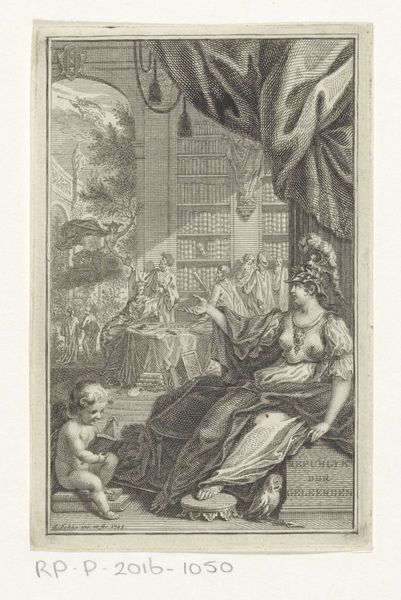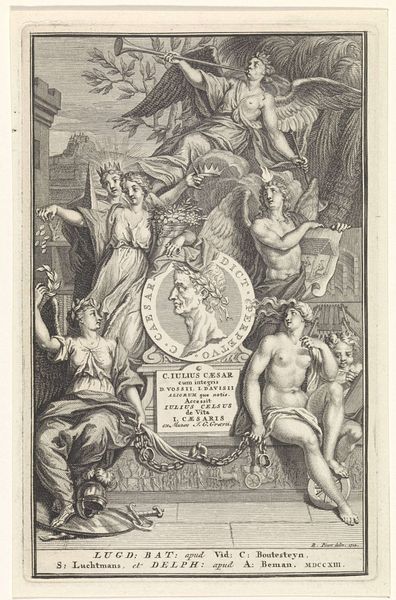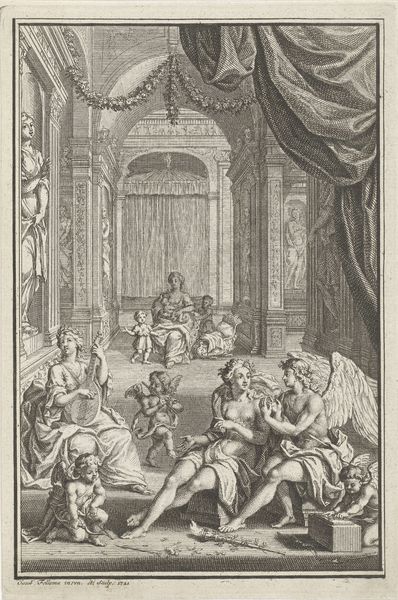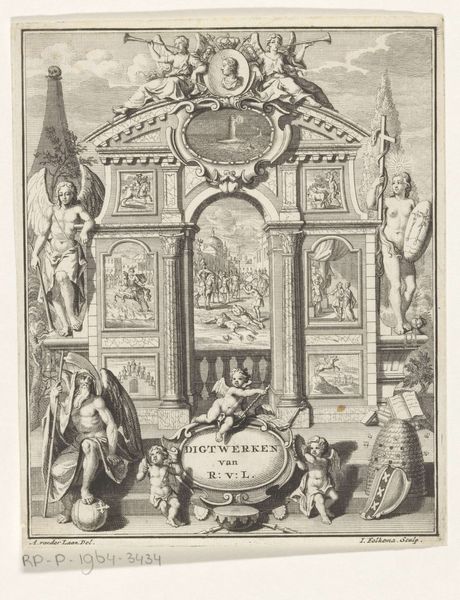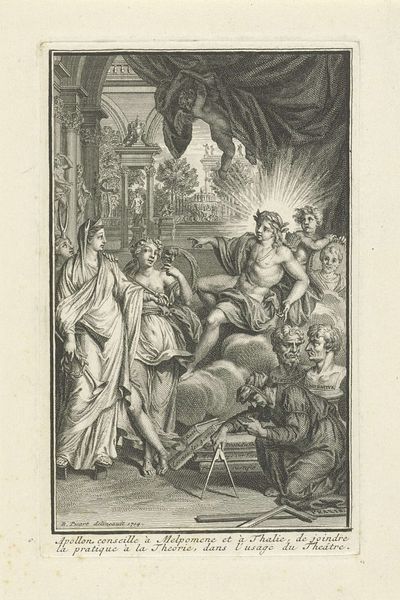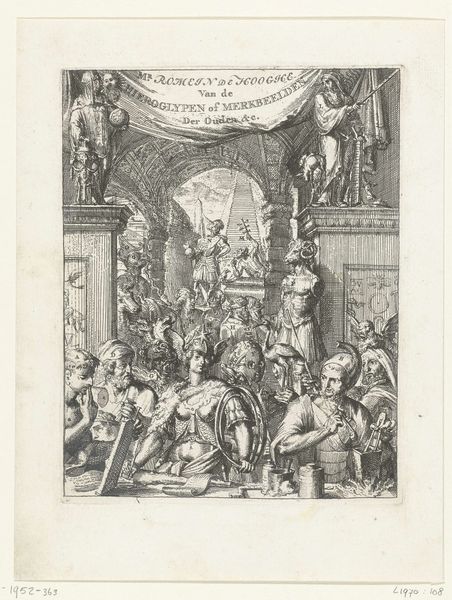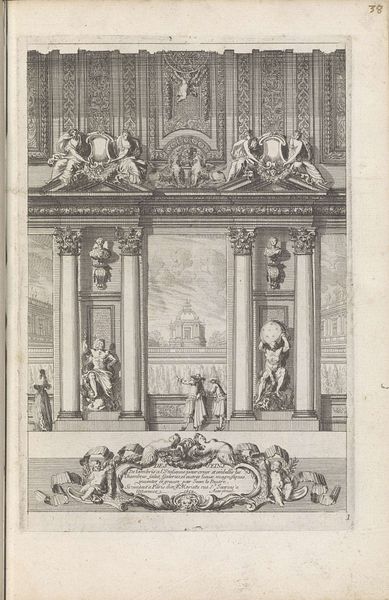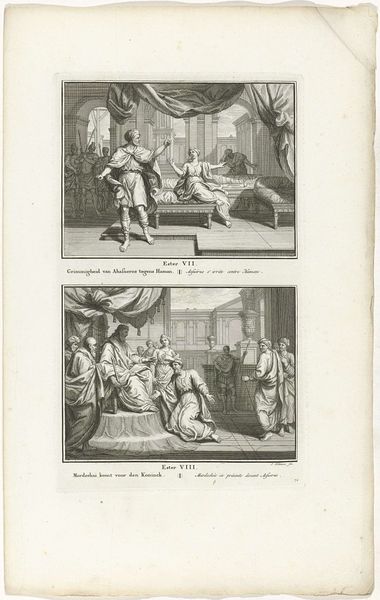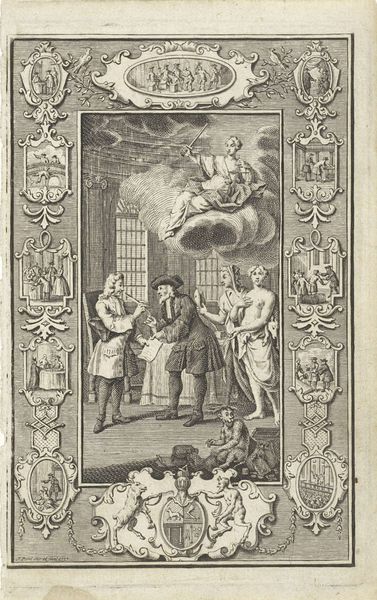
print, engraving
#
portrait
#
allegory
#
baroque
# print
#
history-painting
#
engraving
Dimensions: height 145 mm, width 92 mm
Copyright: Rijks Museum: Open Domain
Editor: This engraving is titled "Minerva in a Library," created by Bernard Picart in 1713. The texture is fascinating given it is a print. All those intricate details achieved through engraving. It’s so busy, with lots of symbolic imagery; what draws your eye when you look at this piece? Curator: The complexity of the composition, first and foremost. Notice how Picart meticulously layers objects and figures, creating depth and a sense of abundance. The eye travels constantly, seeking a focal point but instead discovering a network of interwoven forms. Do you observe the contrast between the sharp lines of the architectural elements and the soft curves of the figures? Editor: Yes, the juxtaposition of the geometric tools with the organic shapes of the cherubs and Minerva herself. The use of light and shadow creates such interesting contrasts, adding dimension to the scene. What’s your reading of that relationship? Curator: Observe how the linear perspective guides our gaze toward the back of the library, but then our view is intentionally disrupted by the verticality of the vase inscribed with “Journal Literaire.” This placement serves to flatten the picture plane, reminding us of the artwork’s status as a constructed image rather than a mere representation of reality. It begs the question: how does this disruption influence the viewer’s perception of space and narrative? Editor: That makes so much sense! It is not about one single perspective. This has shifted how I perceive the balance in the engraving, focusing my attention to its construction. Thank you for expanding my perception. Curator: Likewise.
Comments
No comments
Be the first to comment and join the conversation on the ultimate creative platform.
